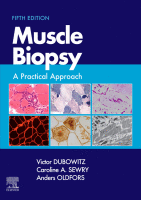Physical Address
304 North Cardinal St.
Dorchester Center, MA 02124

You’re Reading a Preview Become a Clinical Tree membership for Full access and enjoy Unlimited articles Become membership If you are a member. Log in here

You’re Reading a Preview Become a Clinical Tree membership for Full access and enjoy Unlimited articles Become membership If you are a member. Log in here

In addition to the many inherited disorders already described in this book, nerves and muscles can be affected by a wide range of drugs and toxins. Some drug-related myopathies, such as those caused by statins, steroids and alcohol, are common,…

There is a large and heterogeneous group of acquired disorders that have been grouped together collectively as inflammatory muscle diseases. Common clinical diagnoses are polymyositis, dermatomyositis and inclusion body myositis. An emerging group are myopathies without much evidence of inflammation…

There have been major advances in the understanding of the underlying causes of the various myasthenic syndromes, all of which involve abnormalities related to the neuromuscular junction ( Fig. 21.1 ). Their characteristic feature is muscle weakness with fatigue. Myasthenia…

Action potentials in muscle, initiated by depolarization by a nerve impulse and depolarization of the muscle fibre, require the rapid movement of inorganic ions through transmembrane ion channels. The action potential results in the release of calcium ions from the…

In addition to inherited or acquired neuromuscular disorders, muscle weakness and alterations in muscle bulk can occur in association with several underlying conditions and as a consequence of ageing. Hormone imbalances, vitamin deficiencies, malignancies and ageing are the most common…

Skeletal muscles not only use glycogen but also lipid as a source of energy. The oxidation of lipids occurs in the mitochondria and involves a series of enzymatic reactions ( Fig. 18.1a, b ). Defects in these pathways and in…

There has been a dramatic increase in the understanding of disorders that affect the metabolism of muscle, particularly with regard to their biochemistry and molecular basis. A large number of clinical syndromes related to glycogen and lipid metabolism, mitochondrial function…

Introduction A vacuole is a membrane-bound area of a muscle fibre that may contain various cellular components or enzymes. The type and function of a vacuole vary, and the properties of a vacuole can be a useful pathological indicator. The…